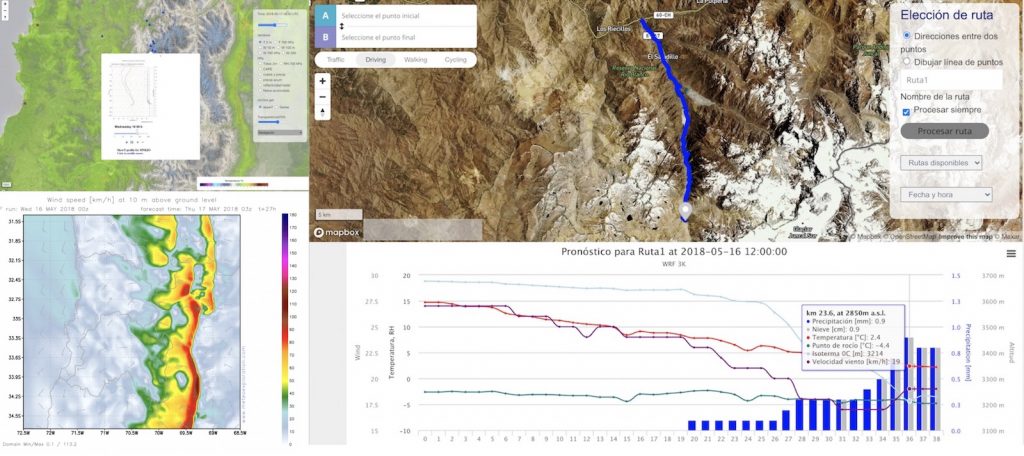Among the tools offered is an interactive map with sites of interest for which vertical profiles (Skew-T diagrams) or time series of various meteorological variables can be obtained. These in turn can be viewed on dedicated pages with greater detail and resolution. Multivariate maps are provided at hourly resolution of the WRF model output and at three-hour intervals over a longer period of time from the GFS model. There is a section with satellite images and the possibility for the user to request a vertical cut of the atmosphere between any two points on the map or to create a route and obtain the weather conditions at any point along it.
We can add information from local meteorological stations and compare it to the forecasts
